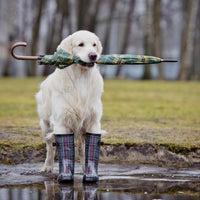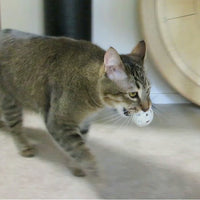Subtotal
$0.00
or
Fads come and go, but I'm loving the trend we are seeing with back to basics cooking and eating. More and more people worldwide are ditching the preservatives for 3 main reasons: Health, taste, and money.
The recent, and still recovering, economic shift we saw forced many to learn how to make food stretch, and the first rule of cheap eating is making it at home. Coming out of that we have continued the trend because of the health and taste benefits – and are now seeing this cross over to pet food. Brands are focusing on organic, but owners are taking it a step further and making food from home. This is a great option, but you need to make sure your pet is getting the nutrition they need in a safe way.
Dogs were originally scavengers and hunters, and could stomach a lot. However, today's dog can't always handle quite as much as their ancestors, and no owner wants to throw rotting meat at their dog anyway. There is a lot of research going into the best diet for a dog, based off the original wolf breeds. We know that they were mostly carnivorous, but like bears, they also filled in their diet with various plant foods. Modern dogs are not much different in their nutritional needs and a balanced meal is key.
So what does a dog need? There are conflicting reports on amounts and percentages, as there typically is when it comes to any nutritional information, but the basics are the same: Protein, fat, vitamins and minerals.
So now that we have our base list of necessary dietary needs, we can look at actually making the food. The first and most important step is safety. Dogs can defend themselves against many bacteria and parasites, but they aren't immune. Make sure food you are planning to prepare has been stored appropriately and is cleaned. Any meat that you won't be using right away needs to go in freezer safe containers and in the freezer. Veggies can go in the fridge and stay good for a while after cleaning.
There's some debate on raw vs cooked food. Most of the veggies your dog eats should be cooked. Meat can be raw, but it's important to discuss this with your dog's vet. Because dogs need fat, you generally want to keep the fat on meat. Leaving the food bone in will change the nutrients and is generally good. Poultry bones should be removed after cooking, but make a very nutritious broth whereas bigger bones on steaks and pork can be gnawed on. Any leftovers can be frozen and later thawed.
Another good option is dried meat. You can do this in a dehydrator and they make really good treats. However you prepare the food, the best option is local and organic. This isn't always doable though, and any grocery store will work as long as the meat is fresh.
The last thing to keep in mind is what not to feed your dog. Dogs are allergic to many things and if you plan on making your own food then you should keep a master list of what not to feed your dog. Also, some breeds have dietary restrictions based on common ailments. If you have a dog whose breed is commonly overweight, you may need to make adjustments to your recipe. As always, discuss the best option with your vet to be safe!





you can please some of the people all of the time, but you can't please all of the people all of the time.Much can be felt in the spirit of this quote when we look at how we observe and discuss the issue of an ever growing pet population, dogs specifically, and the resulting stray dog populace that comes from it.